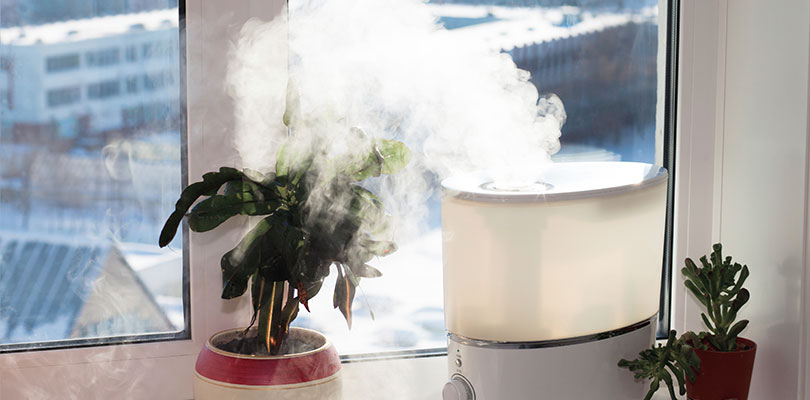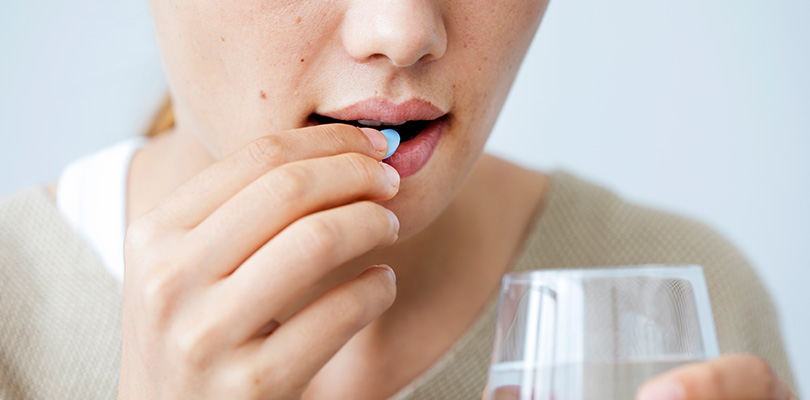Photo Credit: yocamon / iStockPhoto.com
The Humidity in Your Home Affects Your Health More Than You Know
Parents and those with certain breathing conditions may be very familiar with the need to use devices like humidifiers in various areas of their house. Although it is not a widely concentrated issue, the lack of humidity in the air you breathe can pose serious risks to your health, and the health of your family. In-depth research and reviews have revealed that relative humidity in indoor environments may encourage respiratory infections and irritation from allergens.
What Is Humidity?
Humidity is determined by the amount of water vapor in the air. Humidity levels directly contribute to a number of health concerns, both directly and indirectly, yet the severity of this contribution is often overlooked.
Ideally, health professionals recommend that humidity levels remain between 40 – 60 percent. When humidity is too high, it aids in the growth of mold, fungus and dust mites. These issues are typically most invasive to people with asthma, allergies or other breathing conditions. Conversely, low humidity levels can be just as debilitating, in some cases leading to serious health complications.
Air Quality
Experimental research has linked the survival, strength, transmission, and infectious ability of airborne bacteria and viruses directly to humidity. Studies have proven that these airborne irritants may be weakened by 40 – 70 percent if relative humidity is maintained.
Regulating the humidity in your space will directly impact the population of fungus and allergenic mites that accumulate in the air. Keeping your relative humidity below 50 percent will minimize the presence of these pollutants.
Relative humidity that stands at 60 percent or higher creates an invisible allergen breeding ground. Most forms of fungus rely on higher humidity (60 percent and higher) in order to grow. The effects of low humidity may be a little more obscure. To maintain healthier air inside of your workplace or home, you should always stay mindful of when the humidity levels become too high or too low.
Foreign Contaminants
Humidity levels also contribute to the way indoor building materials affect your air. You may indirectly expose yourself to higher rates of formaldehyde off-gassing, acid and salt formation from sulfur and nitrogen dioxide, and ozone formation.
Humidity directly impacts the number of foreign contaminants — allergens, pathogens and noxious chemicals — ingested into your body.
The adverse effects these contaminants pose on your health may be easily avoided by maintaining indoor humidity levels in the “safe zone” of 40 – 60 percent. Evaporators and steam or cool mist humidifiers are most effective at disseminating any aerosols that have been contaminated.
Watch Out For Winter
The colder the temperatures become outside, the faster the air becomes dry, meaning lower humidity. In the winter months, seemingly artic temperatures can increase the dependence on heaters, only further eliminating moisture in the air. With these two components working together, you may subject your health to issues such as dry skin, itchy eyes, bloody nose and irritation of the throat and sinus.
While these may not seem like a serious cause for alarm, with time, exposure to low humidity levels may dry and inflame mucus membrane lining inside your respiratory tract. Impeding its proper function, your body becomes more vulnerable to catching cold, the flu, and a number of other infections. Cold weather and dry air also aids the survival of harmful viruses.
If you're having trouble falling or staying asleep, you might benefit from using sleep aids. There are many options available, so read on to learn more.
Studies have proven that low humidity helps the flu virus survive longer while simultaneously increasing its ability to spread from one person to the next. Winter nasal congestion has also been linked to lower humidity levels, sometimes proving to be the most responsible cause.
“Sensors” in the nose stimulates a cooling sensation that allows air to freely pass through the nasal cavity. Drier air irritates these sensors, creating a natural obstruction in your airways. Without adding humidity to the air, your sinus membranes may become irritated.
Low Humidity: Effects on the Body
Dry, irritated eyes may also be a result of low humidity levels. Dry air evaporates tears stored in your tear ducts, interrupting the natural balance of moisture in the eyes.
Skin is also largely affected. Cold temperatures dry out oils in the skin, sometimes leaving behind itchy, cracked, scaled remains of what was once fresh and hydrated before Old Man Winter showed his face.
There’s even a term for the way low humidity levels affect the body. Each year, the change of the season means the onset of “winter itch” for a countless amount of people. If the skin hasn’t cracked on its own due to lack of humidity, excessive scratching in response to the winter itch may be just enough to damage the skin’s surface and welcome infectious agents.
Cracked skin is more than a cosmetic concern, without a firm layer of skin protecting the body’s internal system, you run greater risk of getting sick and transmitting the illness to others. You’ll notice greater evidence of this concern in the midst of winter or in environments where the humidity typically rests below 10 percent.
Daily Comfort
The human body becomes adjusted to the climate it is most often exposed to. When the climate begins to change, you’ll notice more evidence of your body’s sensitivity. As the air becomes drier, it will try to pull moisture from the nearest source.
The water content of your body is a convenient source. This loss of water pulled from your skin is not immediately noticeable and, if left untreated, can lead to serious complications related to dehydration.
According to the National Health Museum, low humidity levels, as well as the effects of indoor HVAC systems, can lead to scales and cracks in the lips, hands and face. You may notice peeling, irritation or other infections.
Moisture exiting the body can cause it to become more sensitive to cold temperatures. You may feel like it is colder than it really is, leading you to turn up the heat, further dropping your home’s humidity.
Increasing Humidity Levels
If the air in your home, office, or other indoor space is considerably dry and you’ve begun to detect some of the mentioned effects of low humidity levels, it is time to intervene.
Even without noticeable symptoms, drying houseplants, peeled wallpaper, and increased presence of static electricity are also common indicators of low humidity. Check your hardwood floors and furniture to see if they appear cracked or separated due to lost moisture.
Remember, low humidity can occur at any time of year, not just during the winter. Summertime heat encourages more people to turn up the air conditioning. This may also lead to a drop in indoor humidity, so it’s important to always be proactive.
Each time your central heating and cooling unit is turned on, it kicks up a storm of collected dust, pollen, dirt and allergens. To increase the humidity in your space, without furthering your risk, try some of these easy tricks:
- Inhale the steam from a cup of hot herbal tea. This will moisten the nasal passage.
- Steam baths are made by taking a hot shower or sitting in the bathroom while the hot shower is running. You can also cover your head with a towel and lean over a bowl or sink full of steaming hot water.
- Boil a large pot of water on the stove to add moisture in the air throughout your home. Alternatively, you may place bowls of hot water in various areas around the house.
- Use humidifiers. These devices are usually small enough to discreetly add moisture to the air but do not leave them unattended. They must be emptied, washed and cleaned after each use to avoid spreading harmful pathogens in the air.
Correcting the Damage
In addition to increasing the humidity in your air, you can’t forget to take care of your health as well. Drink plenty of water to re-hydrate your body after the loss of water from dry air and low humidity levels. You can also combat these ailments with minor improvements to your diet.
In times of low humidity, you can moisturize your skin with a deep penetrating oil and sealant. Krill oil is high in omega-3, enabling it to saturate cracked, dry skin and encourage its healing.
Omega-3 improves the fat content in the skin and combats dehydration. It may also calm skin irritation, and clearing your complexion. As humidity levels drop even lower, you may find that you need to increase the dose.
Coconut oil is a natural moisturizer and emollient. It can assist with reversing the effects of low humidity damage inside and out. Apply organic virgin coconut oil topically to hydrate your skin and tissues, lessening the appearance of cracks, fine lines and wrinkles.
While the issues caused by high humidity levels are widely discussed, low humidity can complicate your health just as much. A deep understanding of these risks, and how they can potentially impact your body, arms you with the knowledge needed to rectify the problem before it worsens.







